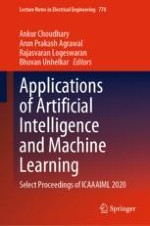2021 | OriginalPaper | Chapter
From Web Scraping to Web Crawling
Authors : Harshit Nigam, Prantik Biswas
Published in: Applications of Artificial Intelligence and Machine Learning
Publisher: Springer Singapore
Activate our intelligent search to find suitable subject content or patents.
Select sections of text to find matching patents with Artificial Intelligence. powered by
Select sections of text to find additional relevant content using AI-assisted search. powered by
